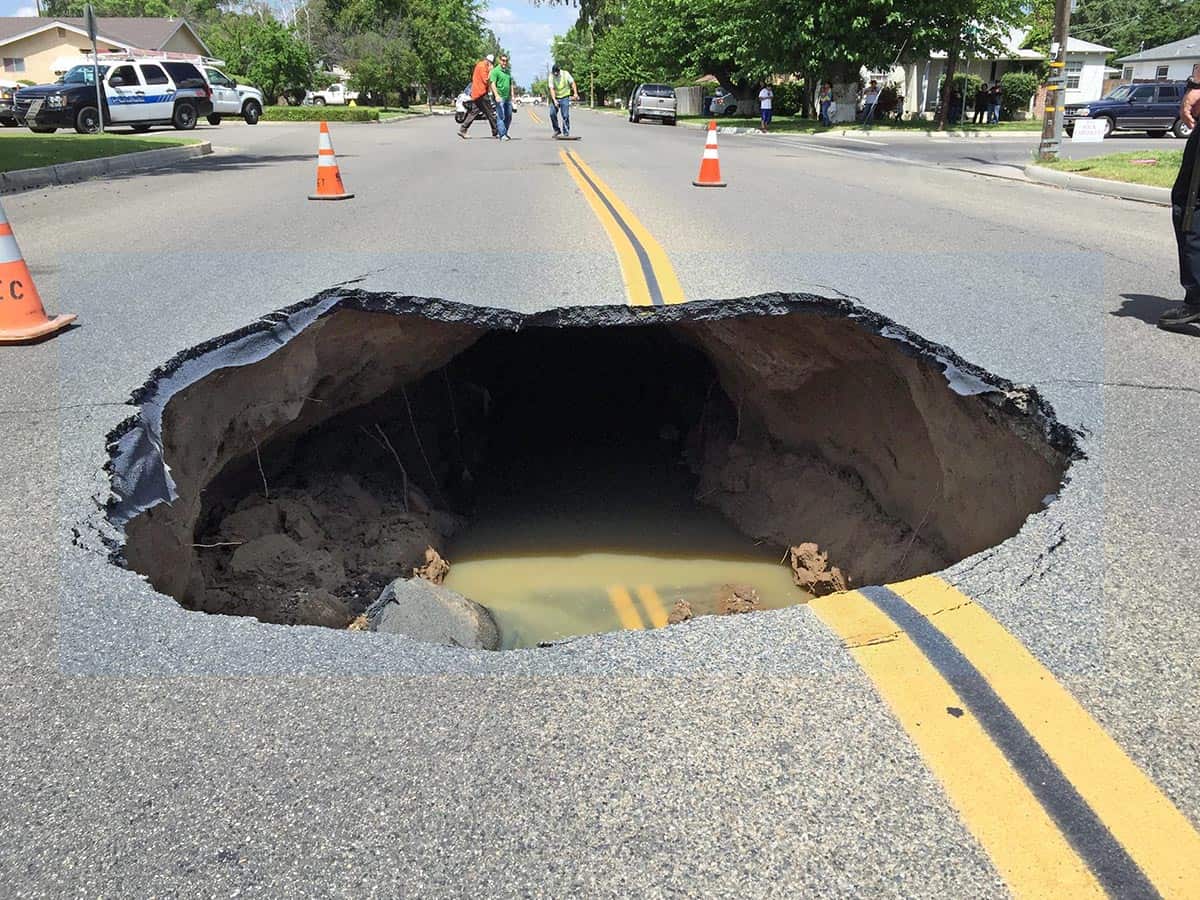What are Sinkholes and How Do They Work?
A sinkhole is a depression or hole in the ground caused by some form of collapse of the surface layer. Most are caused by karst processes – the chemical dissolution of carbonate rocks or suffosion processes.
Sinkholes vary in size from 1 to 600 m (3.3 to 2,000 ft) both in diameter and depth, and vary in form from soil-lined bowls to bedrock-edged chasms. Sinkholes may form gradually or suddenly, and are found worldwide.
What causes a sinkhole?
A sinkhole forms when the surface of the ground is no longer supported by whatever is under it.
You might think that when you’re standing on the earth, there’s nothing below you but more of the same. But there are different layers of dirt and rock. Sometimes, there may be a hole forming, but you don’t know it yet.
For example, water can slowly dissolve limestone over time. Spaces open up where the limestone once was, and if they are large enough, they may become spectacular caves. But if the spaces occur too close to the surface, the land on top may suddenly give way, creating a sinkhole.
Can sinkholes happen anywhere?
Sinkholes are most common where there are underground deposits of rock that can dissolve, such as limestone, carbonate, and salt beds, according to the USGS. Areas at risk include Florida, Texas, Alabama, Missouri, Kentucky, Tennessee, and Pennsylvania.
They can also happen where holes have been created in other ways, like construction and groundwater pumping. Or mines: in the area where I grew up, coal mines had been dug and abandoned decades previously. A few houses in our neighborhood had cracks in their foundations or brickwork from slow, barely noticeable collapse of the ground. It was a known phenomenon, with a name (“mine subsidence”) and insurance policies you could buy against it. I remember, one summer evening, taking a walk with my family to gawk at a sinkhole that had suddenly opened up a few streets over.
How much should I worry?
First of all, sinkholes are rare. The chance that you will be swallowed up by a sinkhole is zero. And not all sinkholes open up suddenly; many form slowly over years.
There’s also not anything you can do about a sinkhole if you’re caught on top of one—I’m not sure if that makes them more or less scary. Settling of land can indicate that something is happening underground, but not all settling indicates a sinkhole, and not all sinkholes are preceded by settling. If you think your yard is developing a sinkhole, experts say to contact an engineering or geological testing firm.
If you do encounter a sinkhole in real life, stay away from the edge. As the sinkhole settles, the edges may continue to cave in. (The Florida Department of Environmental Protection says this process may take several days, longer if there is rain.) Typically a sinkhole in an urban area will be filled in with material that’s less likely to give way in the future, but some giant sinkholes that occur in nature may become beautiful natural ponds.

